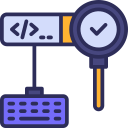Data Analysis and Audit Tracking Using Programming
Data analysis and audit tracking have become fundamental components of modern business operations, providing organizations with the insights necessary to make informed decisions and maintain regulatory compliance. Leveraging programming languages and software platforms, companies can automate the collection, processing, and evaluation of vast data sets while meticulously tracking all audit activities. This not only optimizes operational efficiency but also enhances transparency, accuracy, and accountability throughout an organization’s data lifecycle.

Role of Programming in Data Analysis
Data Acquisition and Preparation
One of the most crucial early stages in data analysis is acquiring and preparing the data for subsequent exploration. Programming streamlines this process, enabling the automated retrieval of large volumes of data from various sources—whether databases, spreadsheets, APIs, or streaming services. Scripts can be designed to standardize formats, handle missing or inconsistent values, and ensure data integrity at every step. By automating data ingestion and cleaning, programming dramatically reduces the time required for analysts to commence deeper investigations, while simultaneously minimizing the risk of oversight or manual errors.
Advanced Analytical Techniques
Beyond preparation, programming allows analysts to implement advanced mathematical, statistical, and machine learning models that reveal hidden patterns, trends, and relationships within data. Through well-structured code, tasks such as regression, classification, clustering, and outlier detection become accessible and reproducible. Programming offers the flexibility to customize algorithms to fit the specific requirements of an analysis, adjusting parameters and methodologies in response to emerging insights. This enables organizations to generate high-value predictions and summaries that support strategic decision-making.
Automation and Scalability
A key advantage of using programming for data analysis is the ease of automating repetitive or complex tasks and scaling them to accommodate growing data volumes. With well-written code, organizations can schedule regular data processing routines and analytical reports without continual human intervention. As data grows exponentially, programming enables seamless transitions from handling thousands to millions of records, all while maintaining accuracy and efficiency. This level of automation ensures that insights remain up-to-date, supporting agile responses to changing business environments.


Ensuring Data Integrity and Traceability
Through programming, complex validation protocols can be seamlessly integrated into data analysis workflows. Code can systematically verify data formats, flag anomalies, detect duplicates, and resolve inconsistencies before any analysis occurs. This preemptive approach ensures that all downstream results are grounded in reliable, high-quality datasets. Additionally, these validation scripts can be version-controlled and reused across projects, guaranteeing standardized practices and continuous improvement across an organization’s analytical output.
Automated Change Detection and Version Control
With the application of programming techniques, automated change detection and version control become simple to implement in any data environment. Scripts can capture every revision to datasets, analytical scripts, and resulting reports, creating a versioned record that preserves historical context. This approach reduces the likelihood of unintentional data loss or corruption and allows analysts to roll back to previous states if needed. Version control is especially powerful during collaborative projects, ensuring all team members can trace the evolution of data and methodologies over time.
Real-Time Alerting and Exception Reporting
Programming enables the creation of real-time alerting systems that notify teams of significant changes or anomalies within their data or analytical pipelines. Exception reporting routines can identify irregular activities, such as unauthorized access, failed processes, or unexpected results, and immediately inform stakeholders or system administrators. These proactive notification systems not only safeguard the integrity of critical business information but also expedite the resolution of issues, minimizing downtime and exposure to risk.
Detailed Audit Trail Generation
Generating a detailed audit trail is vital for compliance, transparency, and operational review. Programming can be utilized to create comprehensive records that document every step in the data analysis process, including data transformations, user actions, and output generation. These audit trails are often stored securely and can be queried during internal assessments or external regulatory reviews. Consistent and automated audit trail generation reinforces an organization’s commitment to ethical data practices and accountability.
